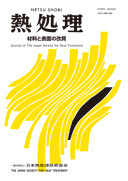Volume 54, Issue 6
Displaying 1-2 of 2 articles from this issue
- |<
- <
- 1
- >
- >|
Research Papers
-
Article type: Research Paper
2014Volume 54Issue 6 Pages 313-318
Published: December 28, 2014
Released on J-STAGE: January 16, 2015
Download PDF (4762K) -
Article type: Research Paper
2014Volume 54Issue 6 Pages 319-324
Published: December 28, 2014
Released on J-STAGE: January 16, 2015
Download PDF (5750K)
- |<
- <
- 1
- >
- >|
